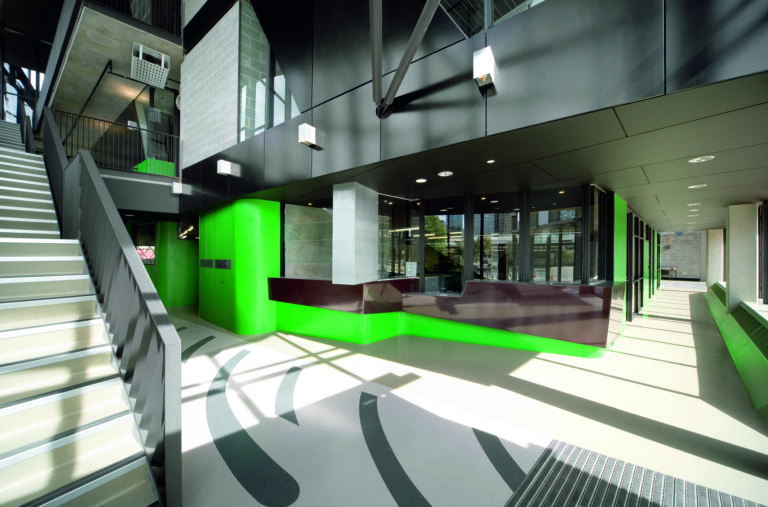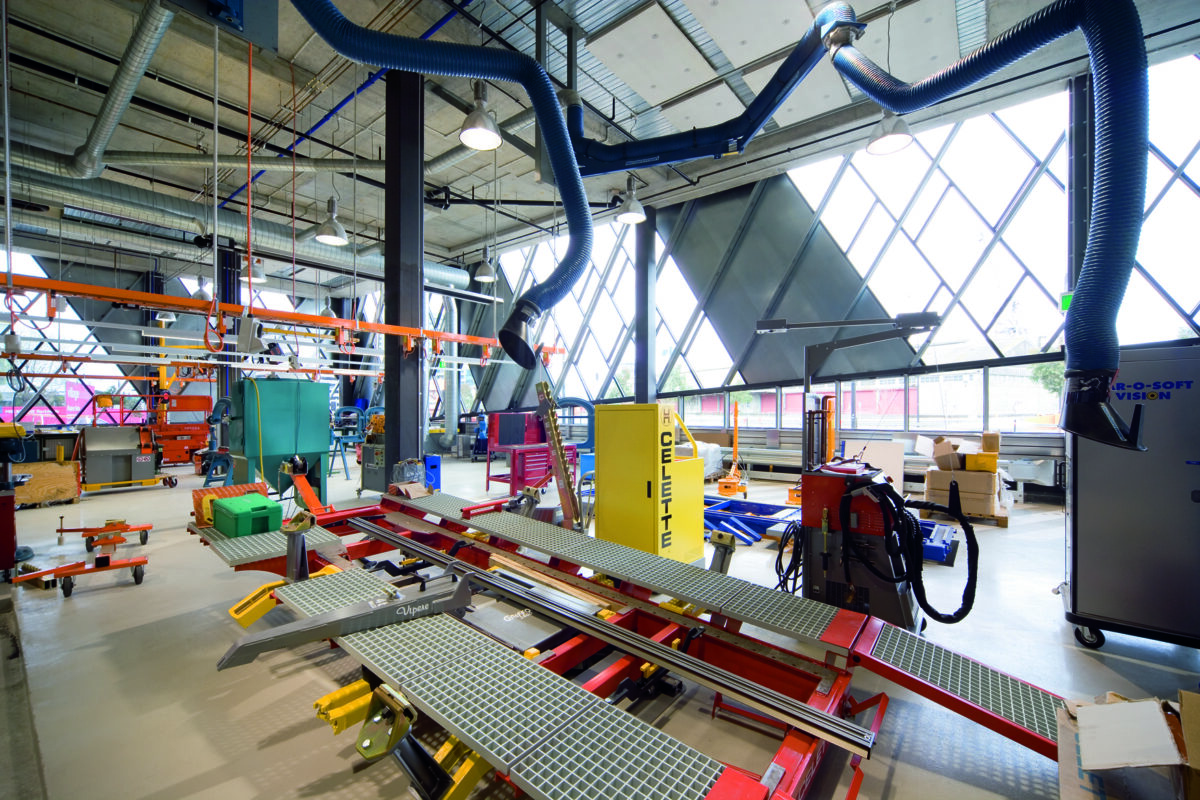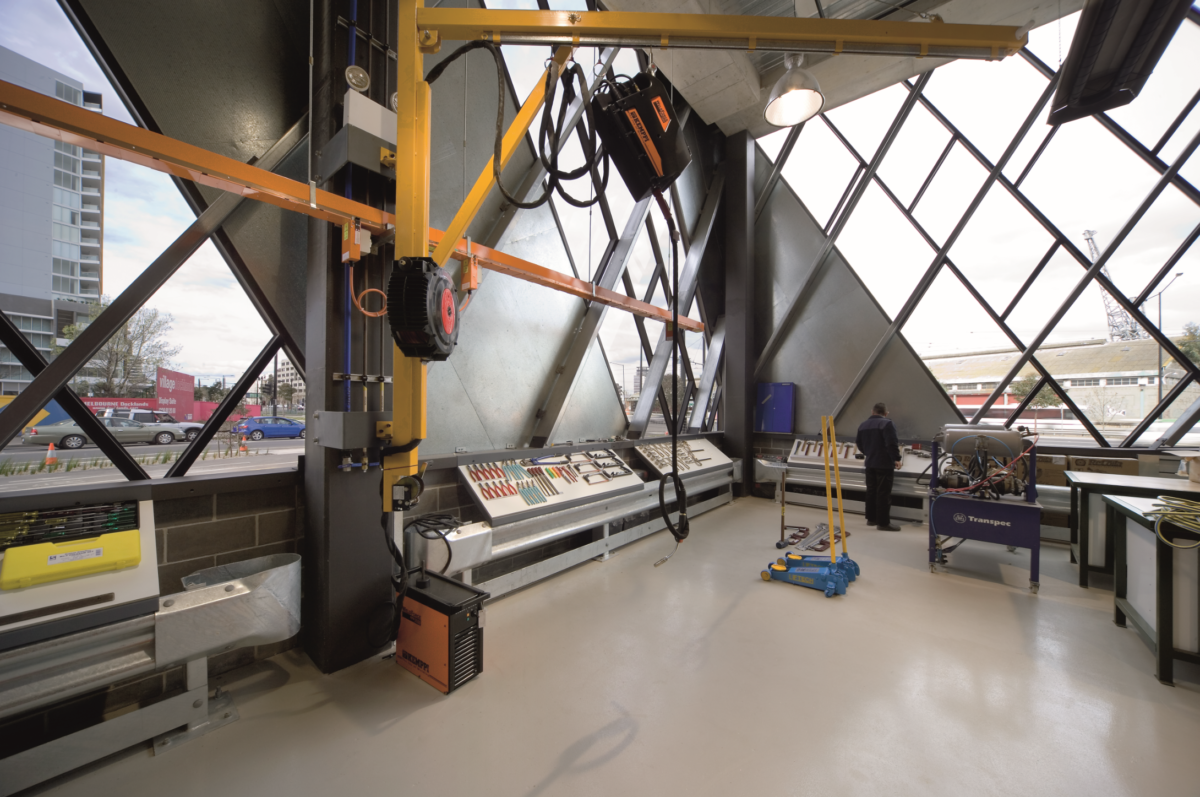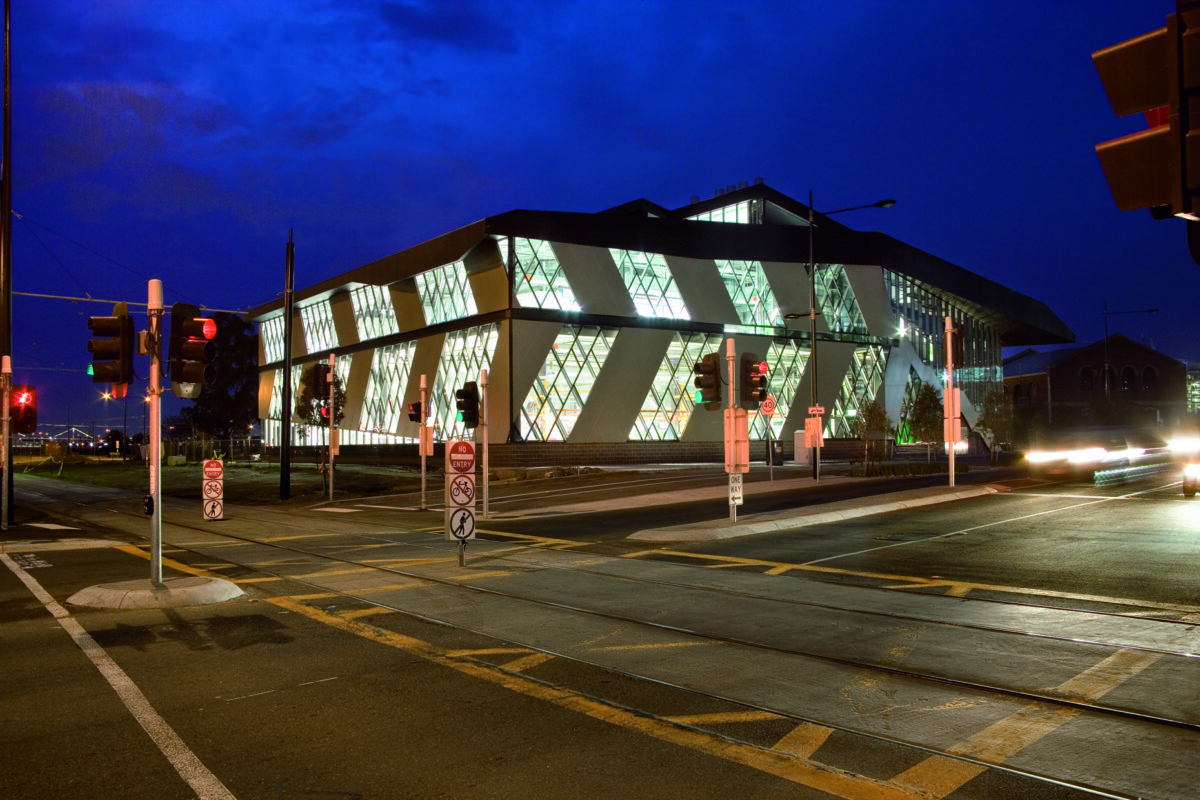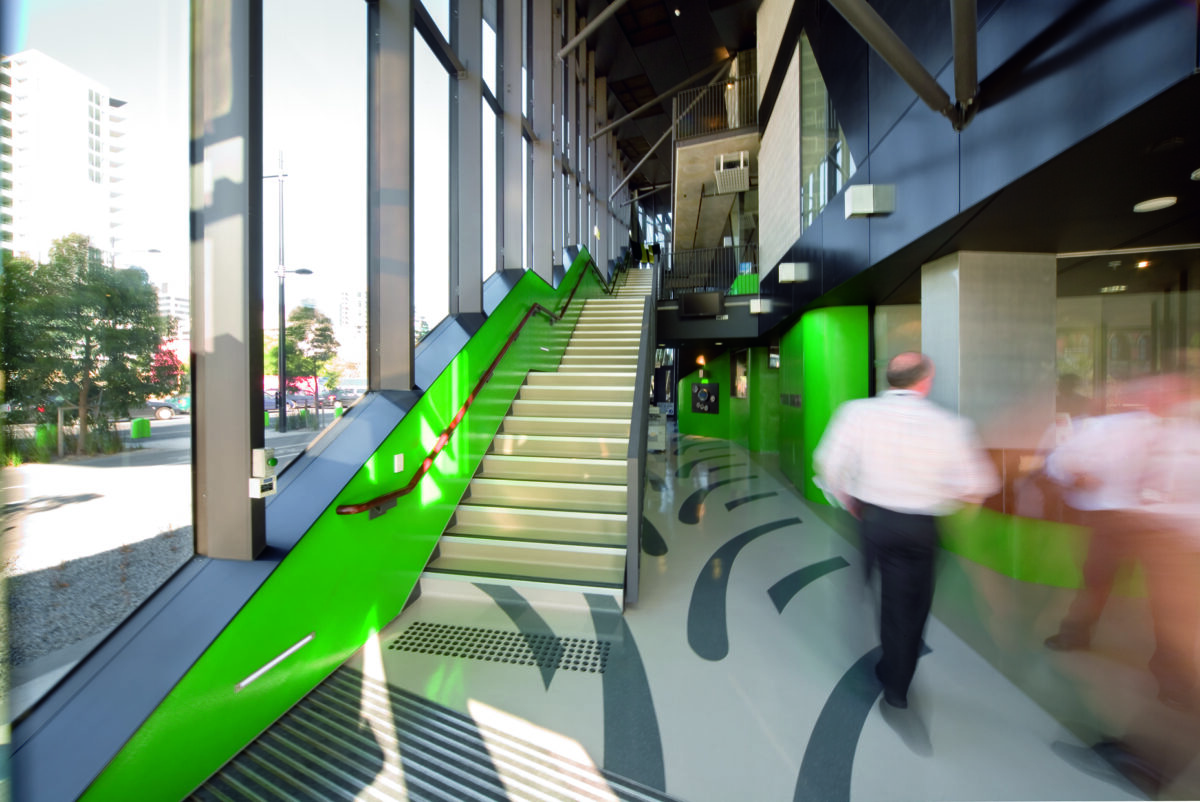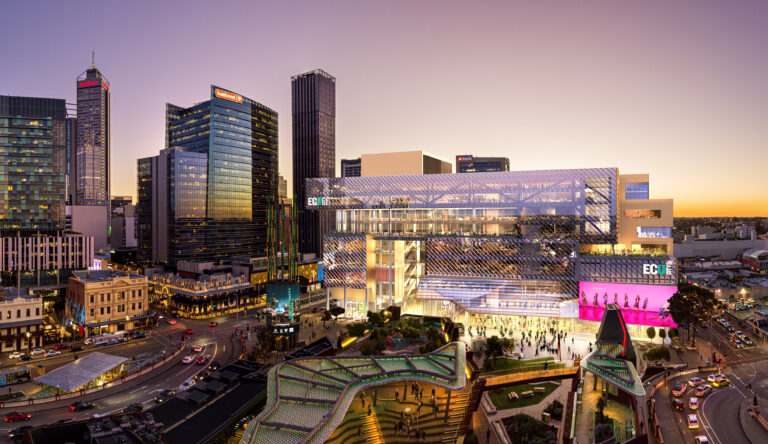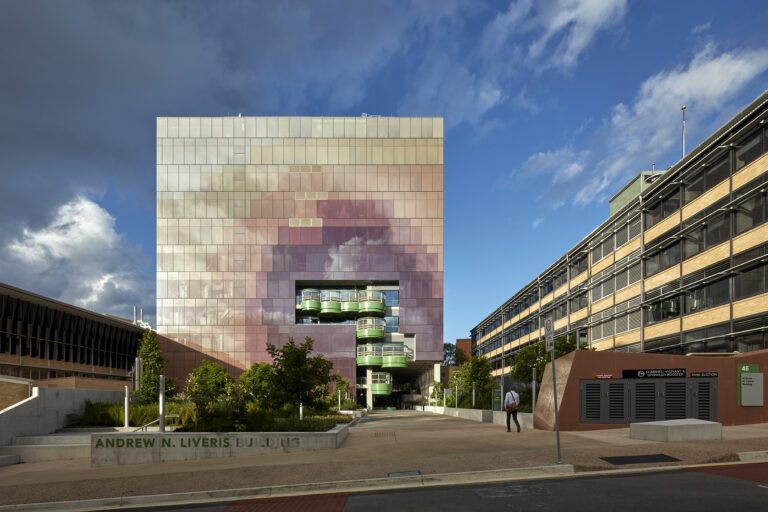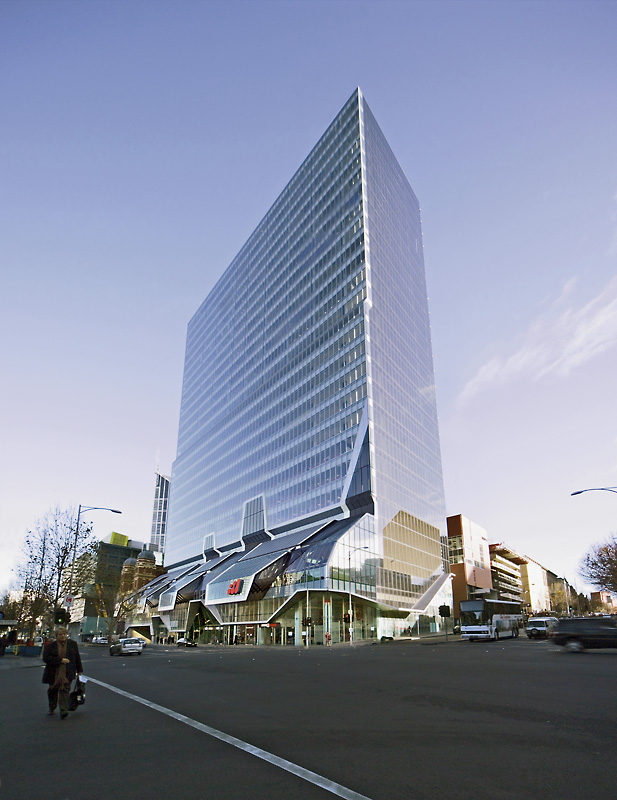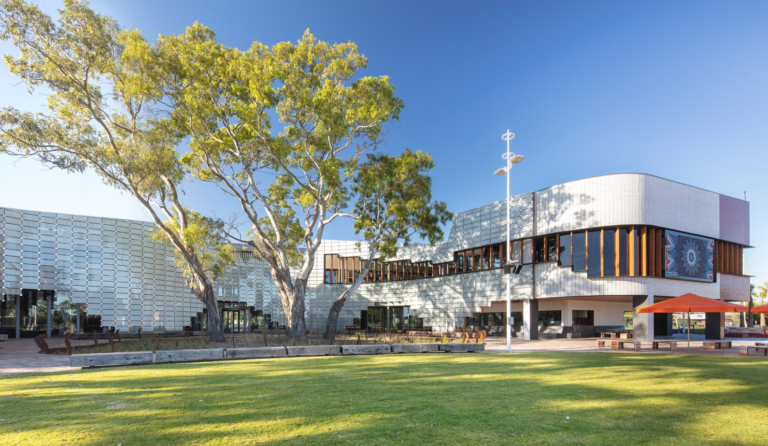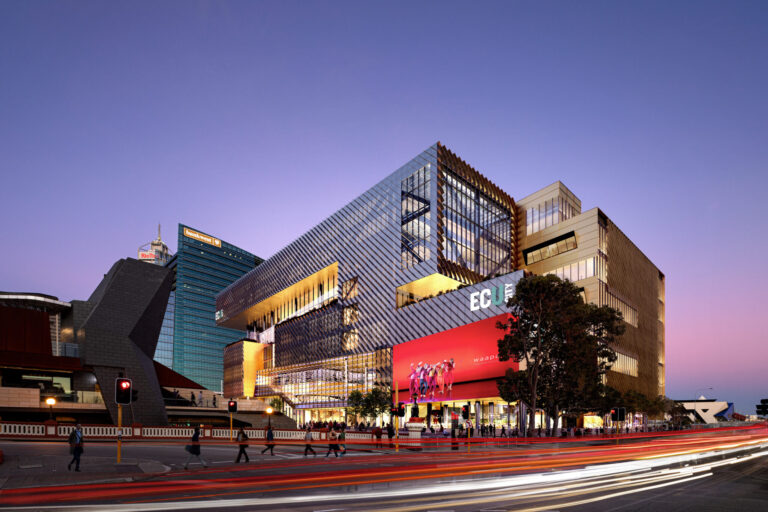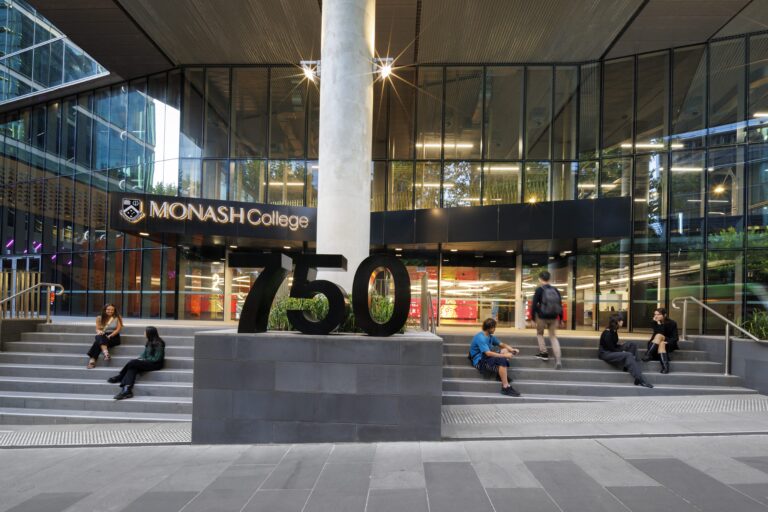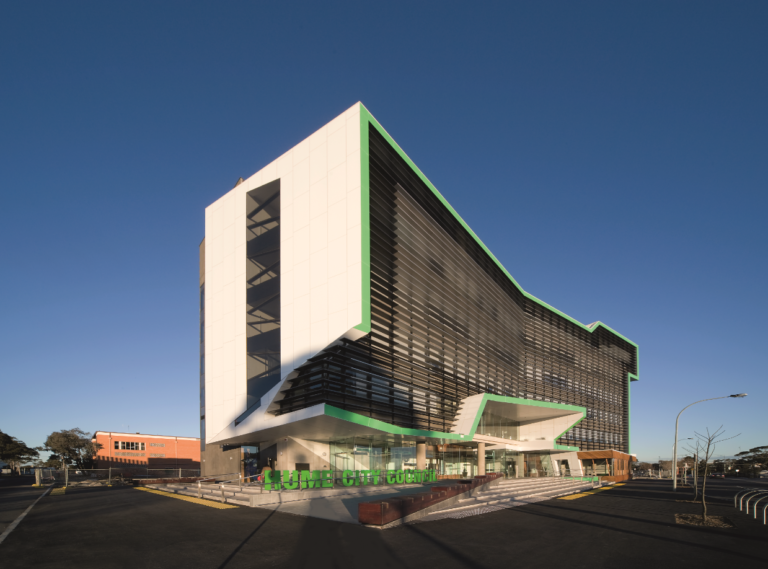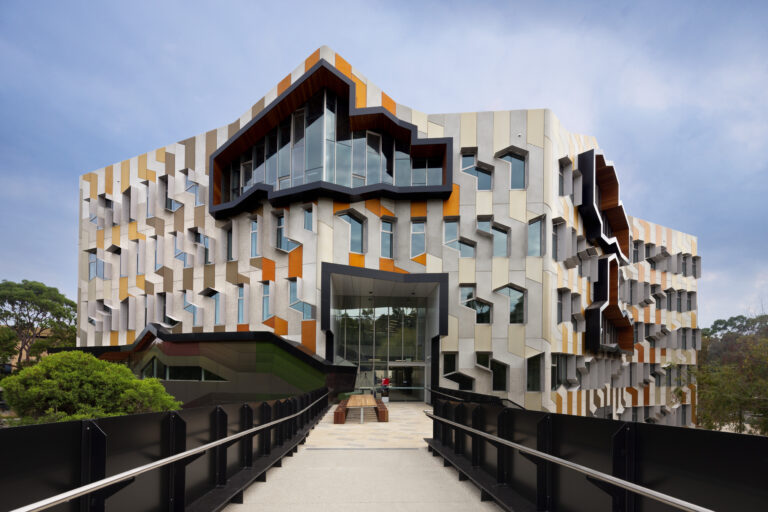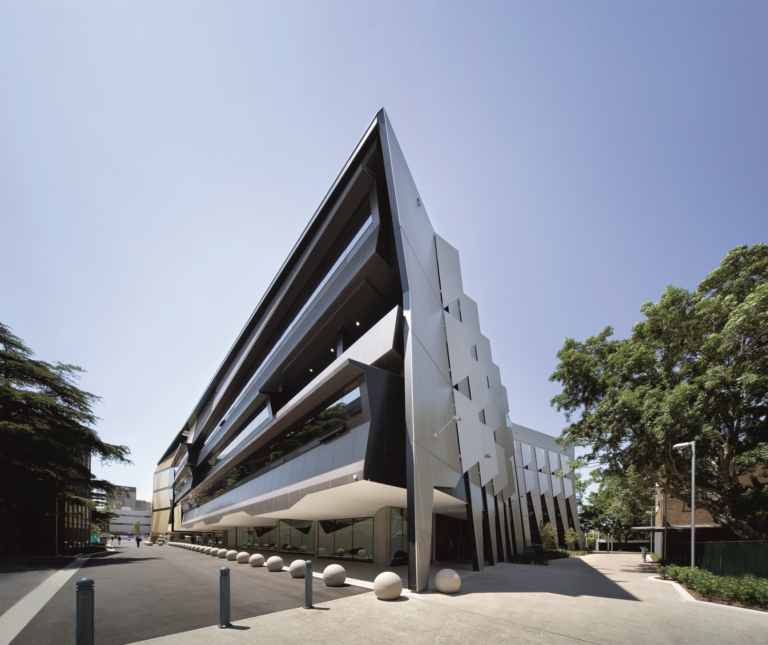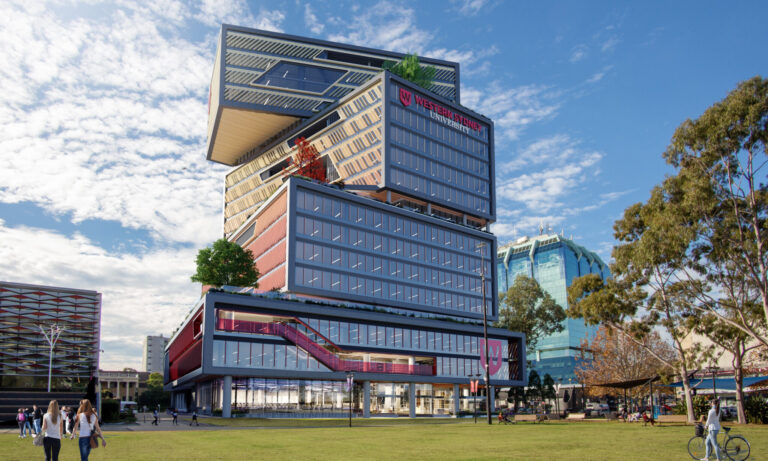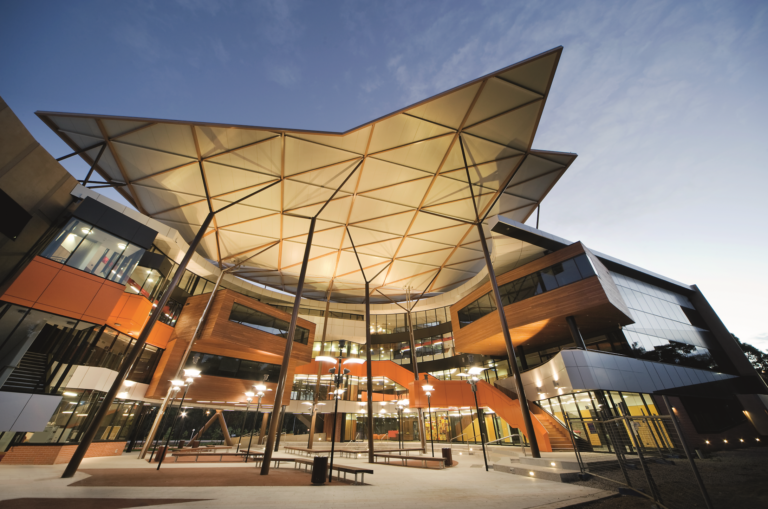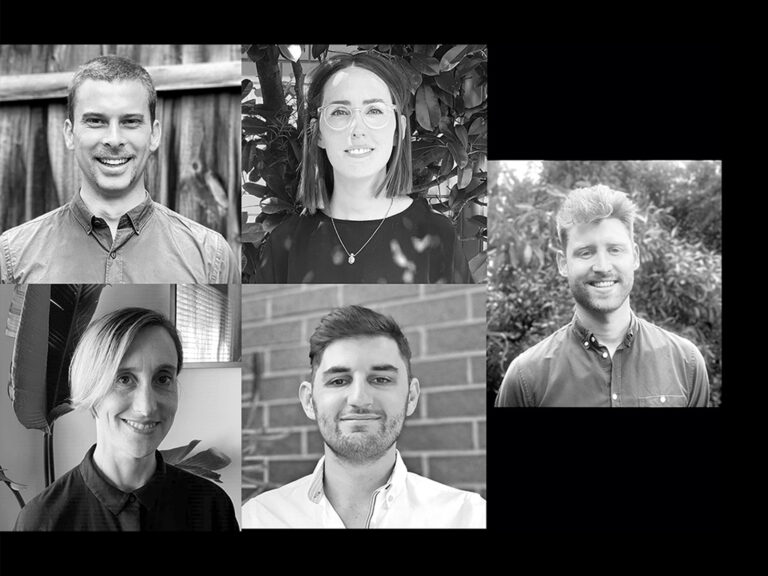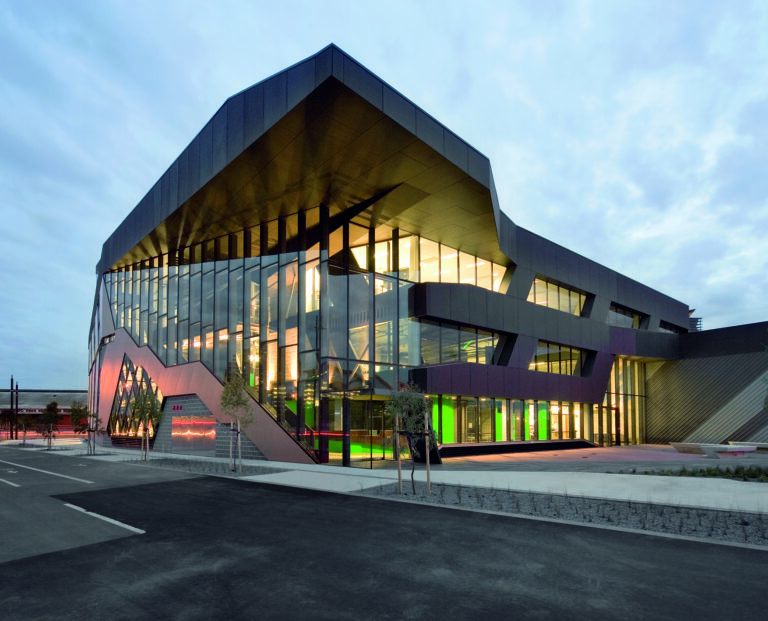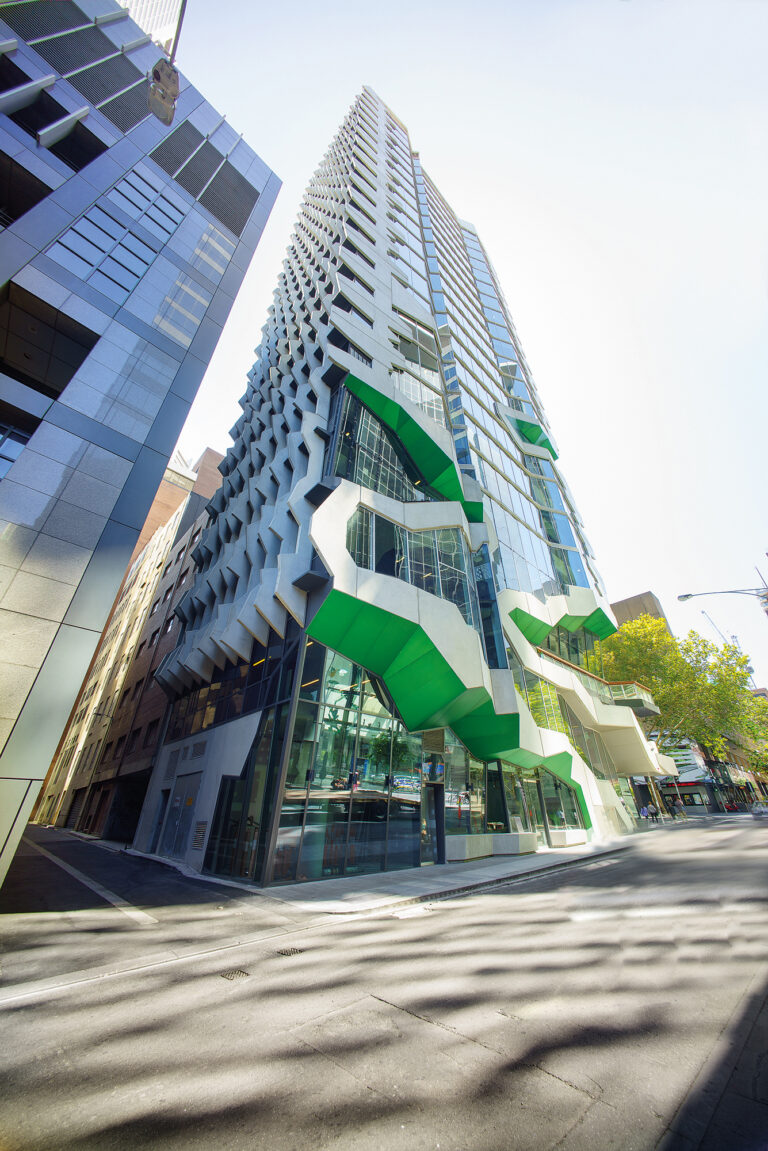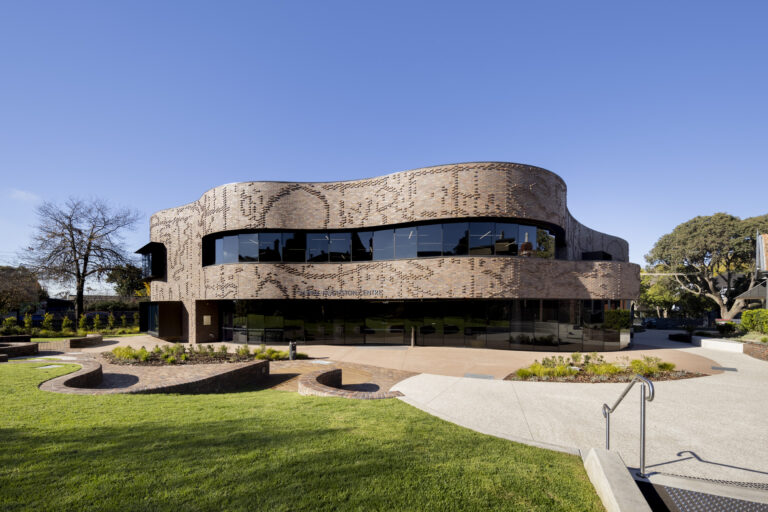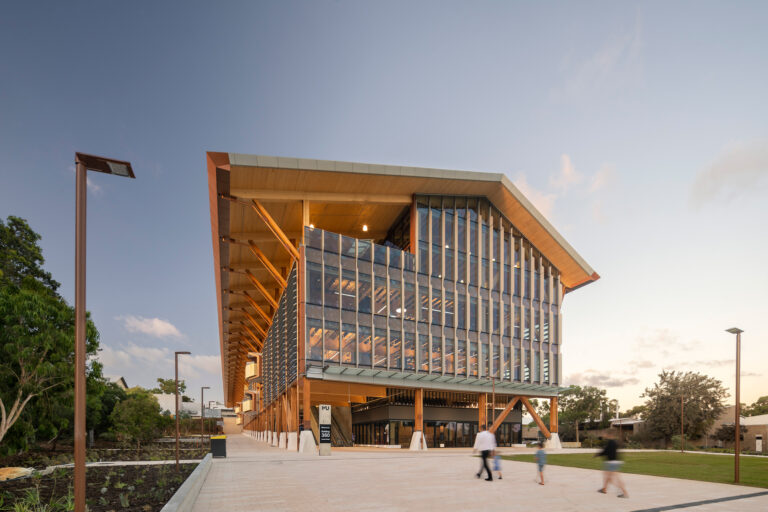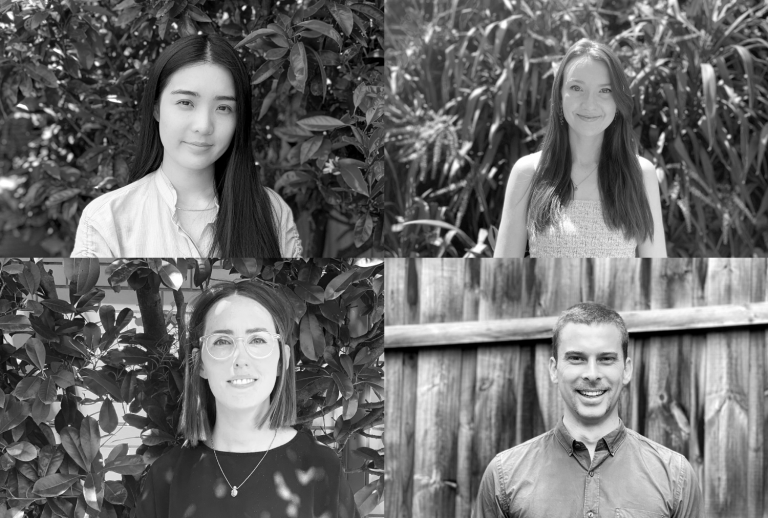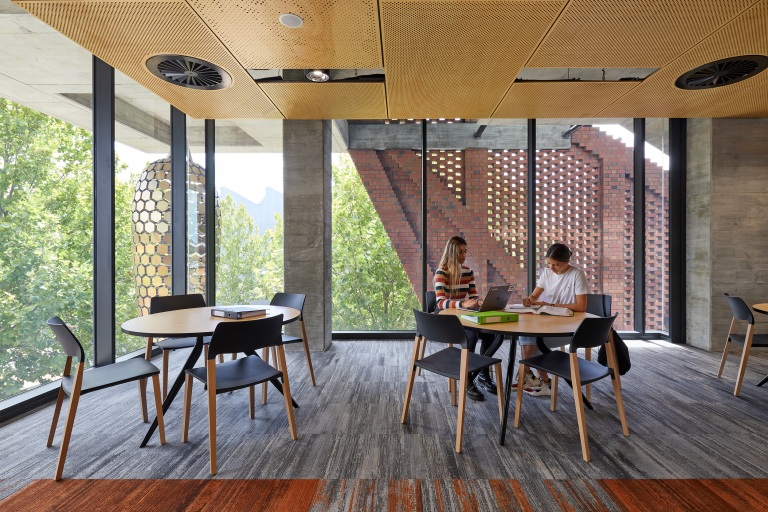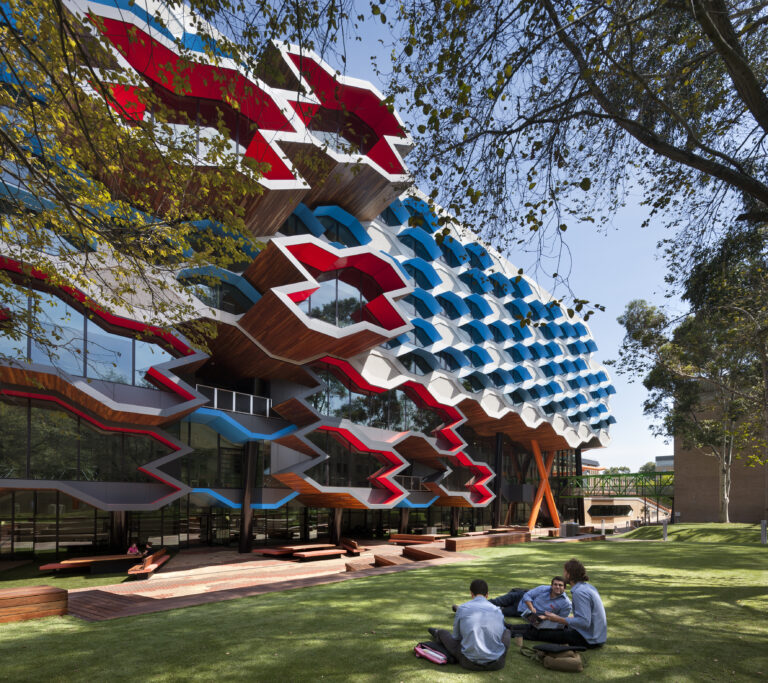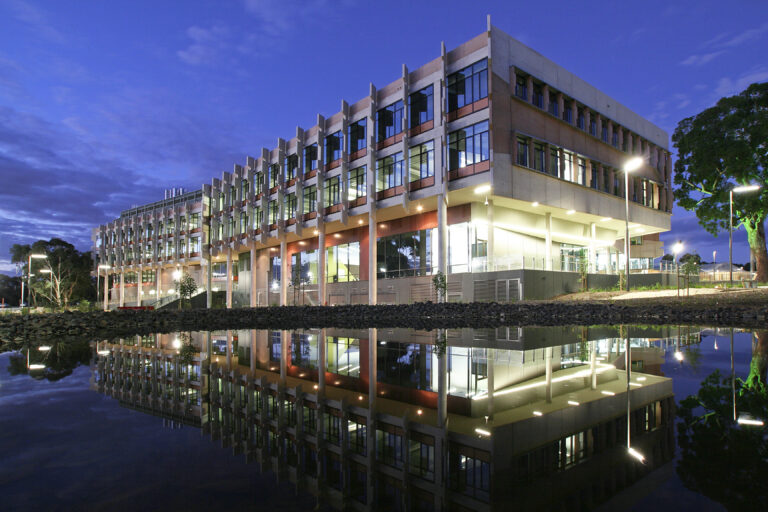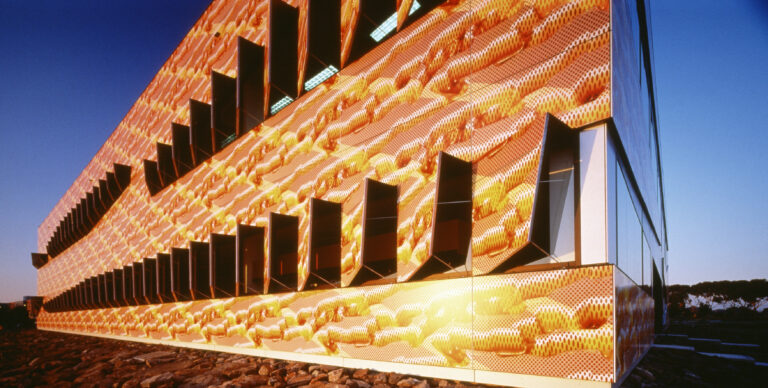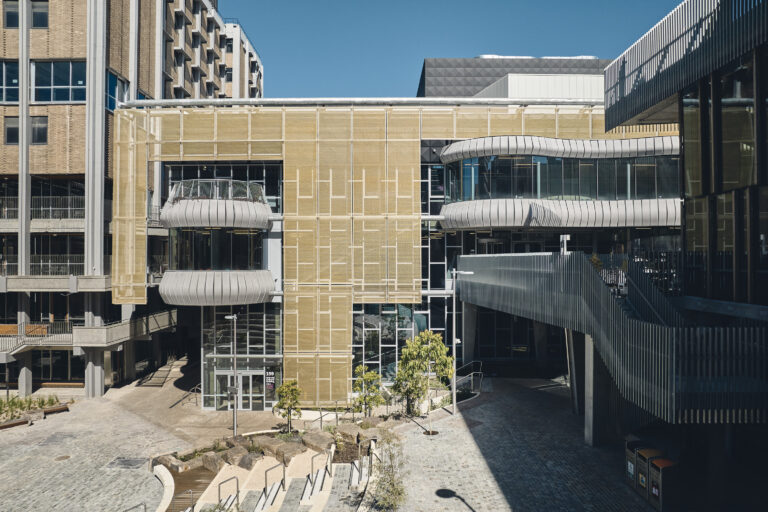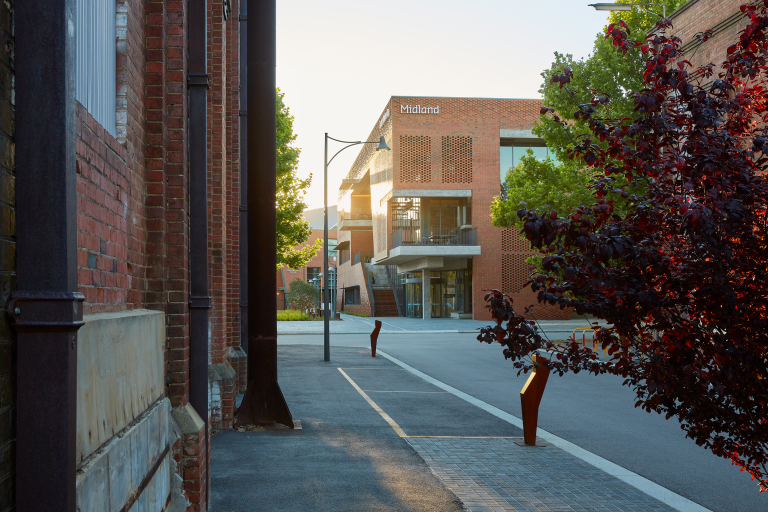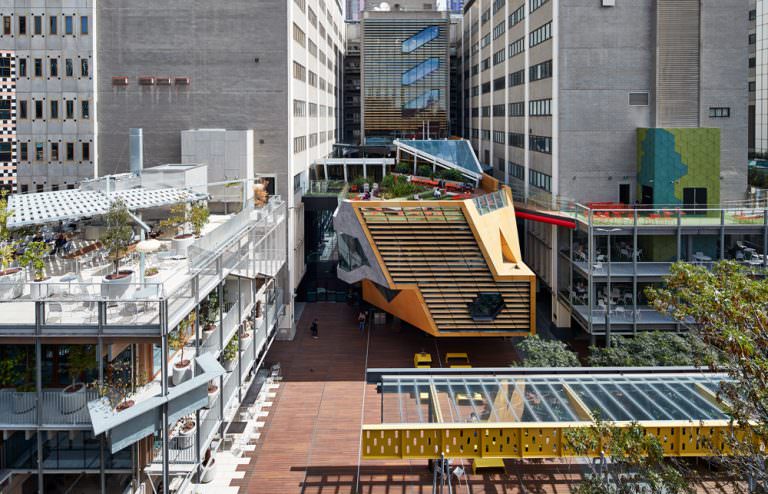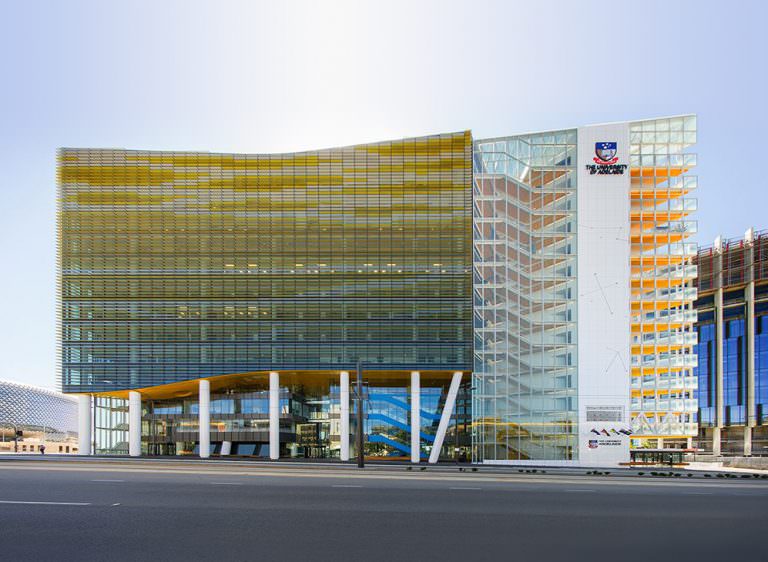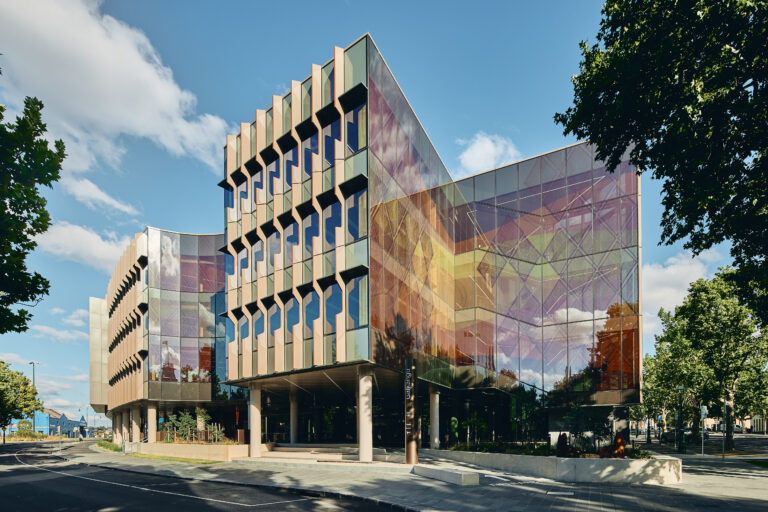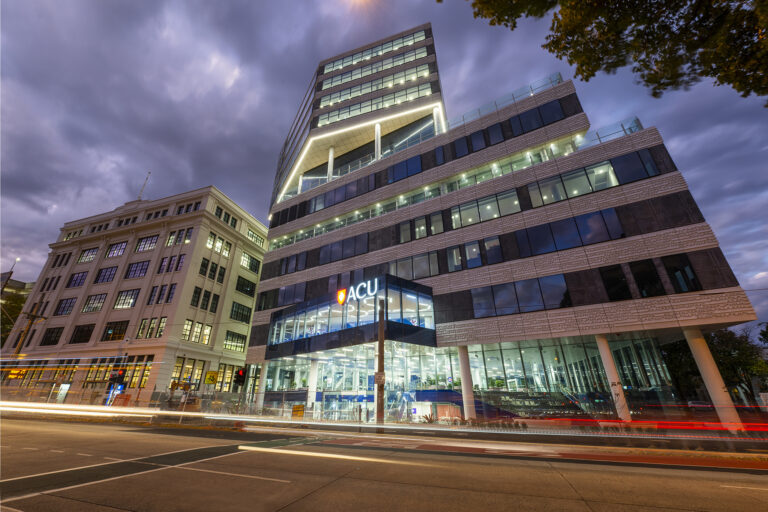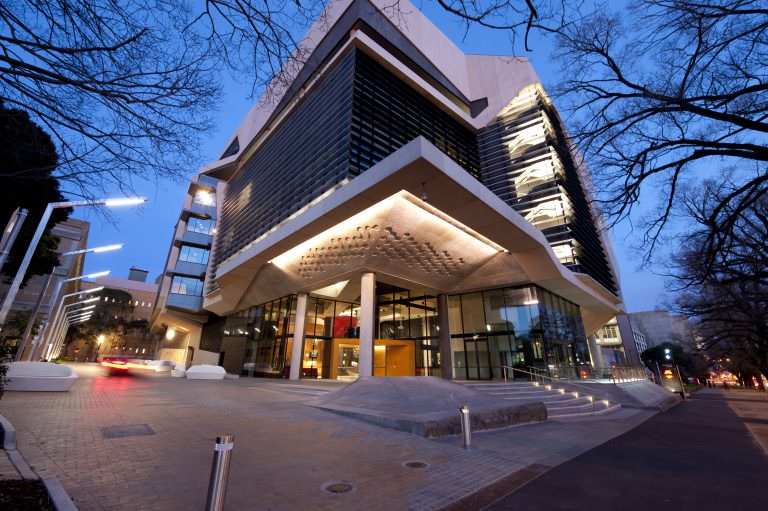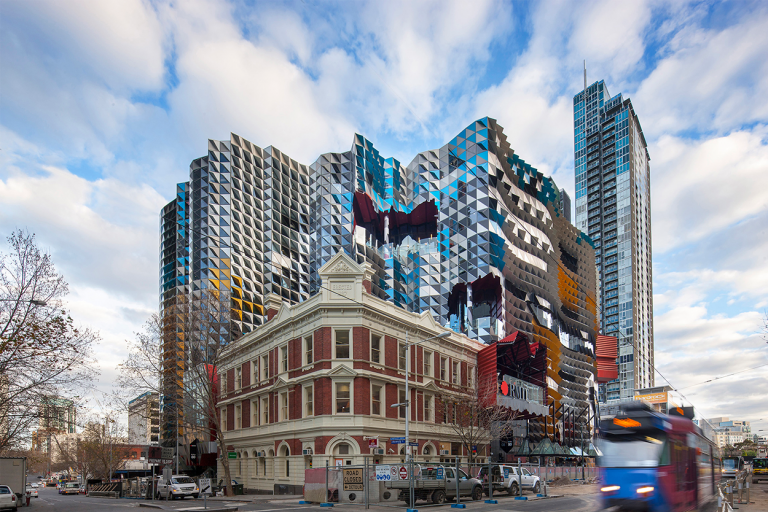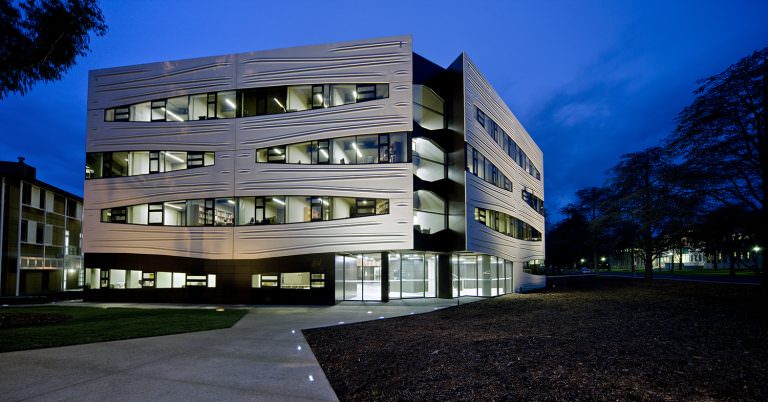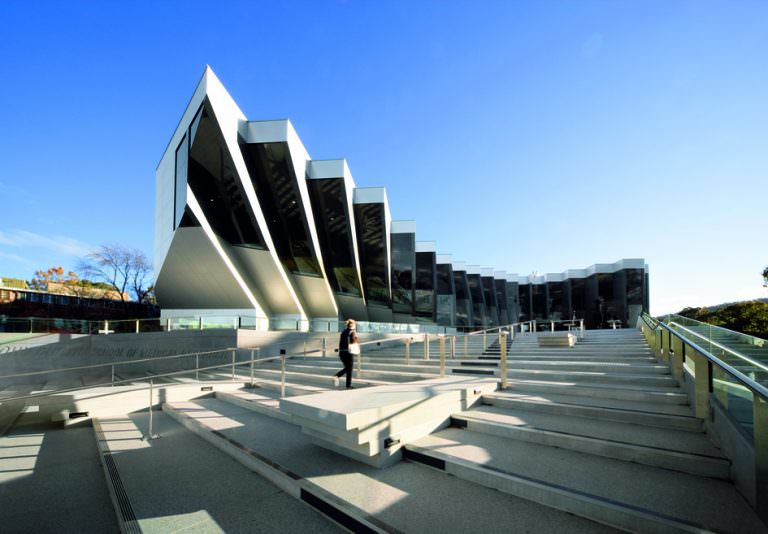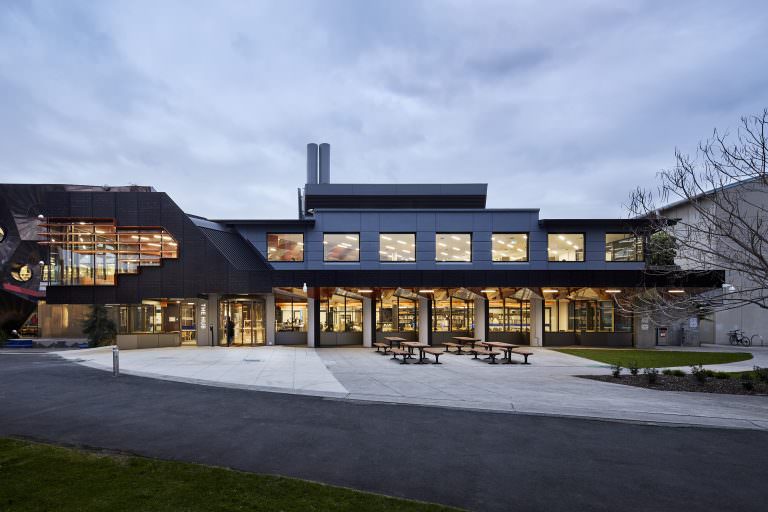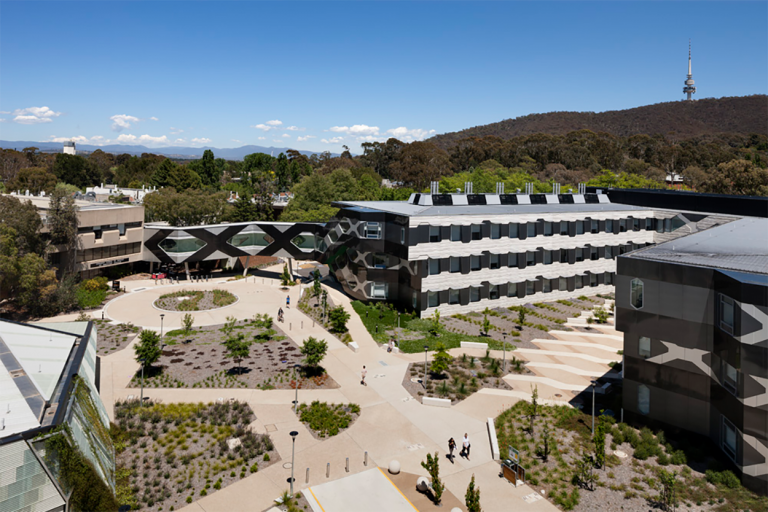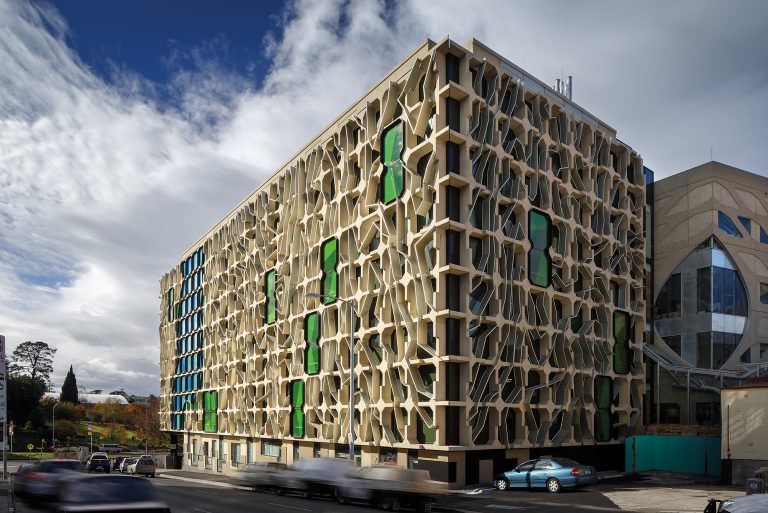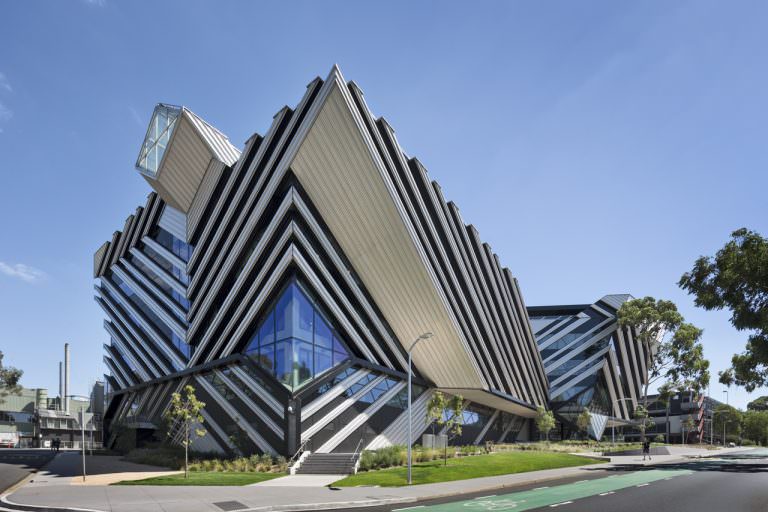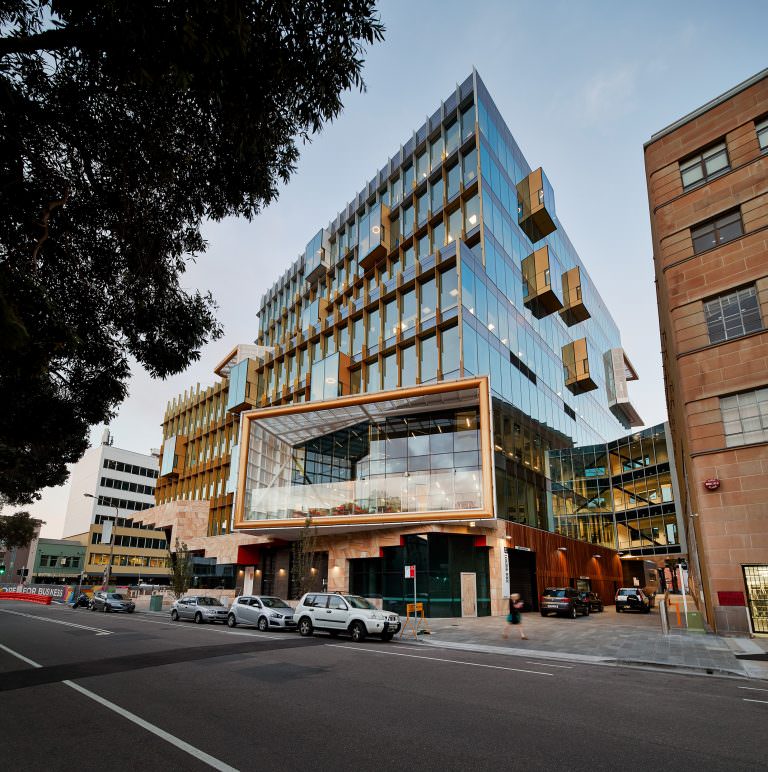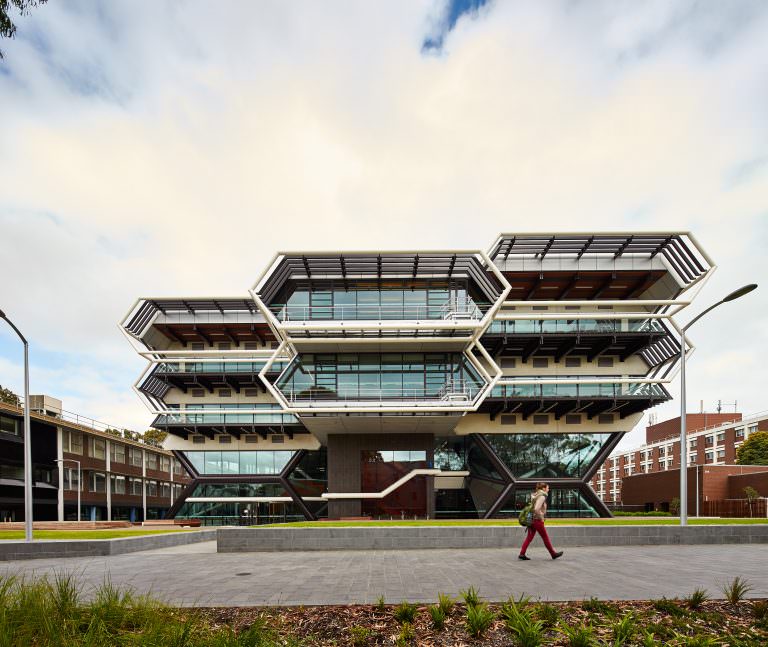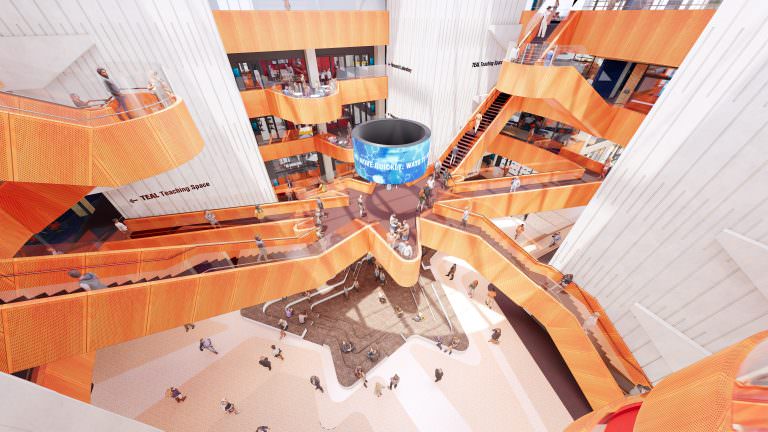Achieving exemplary sustainable outcomes
When it was opened in 2006, ACE signalled a watershed moment in the construction of TAFE training facilities. Designed to reflect the Institute’s commitment to promote sustainable practices, the building is a nation-wide leader in delivering innovative automotive training programs. The building was among the first of 10 buildings in Australia to be awarded a 5 Star Green Star rating, making it a building of national significance. The sustainability approach is embedded in everyday operations, targeting efficient performance as part of standard practice rather than an add-on.
The design employs a range of environmentally-sustainable features including fully natural ventilation incorporating two intake, and thermal chimney zones. ACE is the first Australian building to incorporate BATISO active thermal mass cooling. Cooling coils embedded into the post-tensioned slabs reticulate chilled water providing ‘coolth’ to classroom spaces. This thermally active building strategy stores and releases cooling through the slab to smooth peaks and improve comfort across the timetable.
Kangan Batman TAFE Executive Director and previous general manager Phill Murphy commented on the impact of the sustainable design saying, “The ACE currently consumes only half of the average energy consumption of a typical Melbourne office building, which reduces greenhouse pollution by around 103 tonnes per year – the equivalent to planting 155 trees annually.” Although a key driver for the project, sustainability was conceived of as embedded rather than exemplary; a paradigm shift from sustainability as different and expensive. By privileging passive systems and robust materials, the building supports learning space optimisation with minimal operational complexity.


